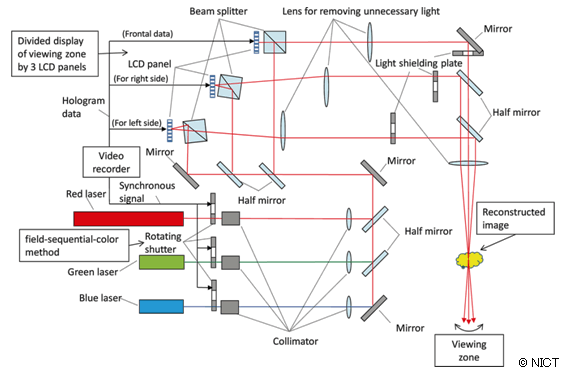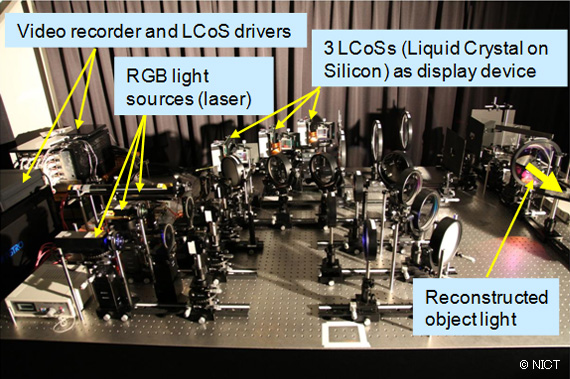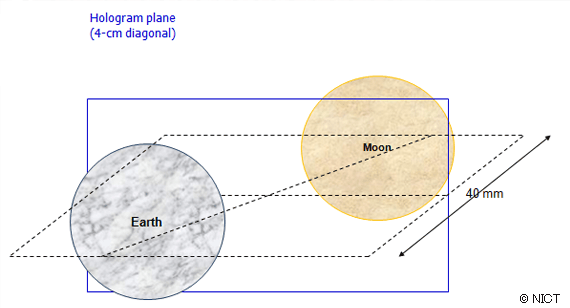NICT has been conducting researches and developments in ultra-realistic communication technology, which aims to enable individuals separated in time or space to feel like they are sharing the same sensations. As one of key technology, it advances the research of electronic holography as an ideal 3D image system. In principle, holography enables natural and realistic 3D image display without any glasses and visual fatigue, which are issues in current 3D TVs. Therefore it is expected to be the ultimate 3D image technology.
Electronic holography becomes necessary to display moving holography images, while holography can be implemented by photography or printing. However, electronic holography presents many difficult technological challenges. As a result, research in electronic holography has not so much advanced worldwide. The major problems on electronic holography include the narrow viewing-zone angle and small display size.




























